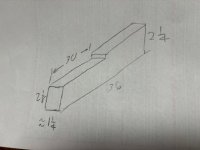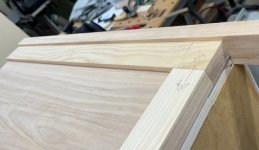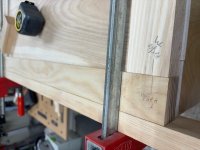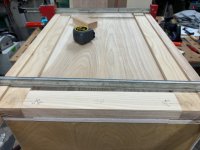Mike Goetzke
Member
- Joined
- Jul 12, 2008
- Messages
- 1,177
I have this dresser leg that needs a step cut in it and my head is hurting thinking about the best way to make the cut. I have a TS, BS, router table, jointer ...
I was almost thinking the best way would be to use the TS and hand chisel it square.
Any suggestions welcome.
Thanks[attachimg=1] -Mike
I was almost thinking the best way would be to use the TS and hand chisel it square.
Any suggestions welcome.
Thanks[attachimg=1] -Mike







